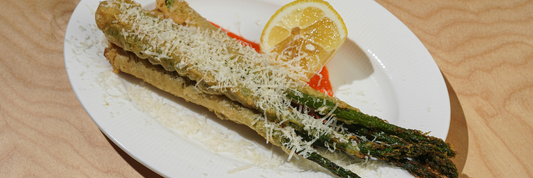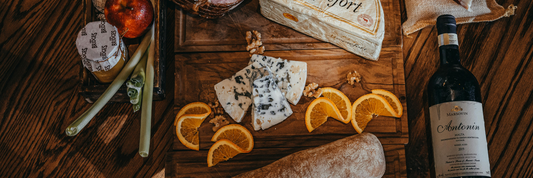Running a bakery today means balancing taste, presentation, and sustainability. Yet when it comes to packaging, terms like “recyclable” and “compostable” often confuse both bakers and customers. Choose the wrong option, and you could face higher costs, shorter shelf life, or frustrated buyers.
This blog breaks it down simply: you’ll learn the real differences between recyclable and compostable bakery packaging, which bakery items each works best for, and how to guide customers toward proper disposal. For bakeries across Canada and North America, Kimecopak provides eco-friendly packaging solutions that protect your products, win customer trust, and cut down on waste.
- Recyclable vs. Compostable Cupcake Boxes: Which One is Greener?
- Recyclable vs Compostable vs Biodegradable: What’s the Difference?
Why It Matters to Bakers and Customers

Sustainable packaging isn’t just a trend, it’s shaping purchasing behavior. Research shows that over 50% of consumers actively choose products with eco-friendly packaging, and 90% are more likely to buy from brands that use it (Shorr). In fact, nearly a third have switched brands solely because of packaging.
For bakeries, this means two things:
- Customers expect packaging to reflect care for the environment.
- Sustainable packaging is a sales driver, not just a cost.
Want help choosing the right option? Contact us today or request a free comparison sample pack.
What Is Recyclable Packaging?
Recyclable packaging enters a closed-loop system: instead of going to landfill, materials like plastic, paper, glass, or aluminum are collected, processed, and turned into new products.
Examples in bakeries:
- PET plastic clamshells: Perfect for fruit tarts, cheesecakes, and chilled pastries. They’re durable and transparent but must be disposed of in recycling bins.
- Cardboard & kraft paper bags/boxes: Common for cookies, baguettes, or dry pastries. Lightweight, recyclable, and widely accepted in curbside programs.
- Aluminum tins: Ideal for pies and loaf cakes. Aluminum can be recycled infinitely without losing quality.
Benefits of Recyclable Packaging
- Reduces demand for virgin materials.
- Widely available recycling infrastructure.
- Helps extend product life cycles.
Limitations of Recyclable Packaging:
- Plastics like PET degrade after several recycling cycles, eventually downcycling into lower-value products.
- Many consumers are unsure what’s truly recyclable (waxed paper or food-soiled boxes often are not).
For bakers, recyclable packaging is practical and accessible but it relies on customer education and proper waste sorting.
Clamshell containers are on sales at KimEcopak!
What Is Compostable Packaging?
Compostable packaging is designed to break down into soil without leaving harmful residues. Instead of being reused like recyclable packaging, it decomposes into compost through natural processes.

Materials & examples:
- Bagasse (sugarcane fiber) clamshells for rolls or pastries.
- PLA or PHA bioplastics for cold desserts like puddings or mousse cups.
- Compostable parchment paper for oily croissants or cookies.
How composting works:
- In industrial composting facilities, packaging is exposed to controlled heat, moisture, and microbes, ensuring complete breakdown.
- In home compost systems, some compostable materials (like unlined kraft paper) decompose naturally, but bioplastics often require higher heat than home systems provide.
Limitations:
- Without proper composting infrastructure, many compostables end up in landfill, where they may not decompose effectively.
- Composting varies widely by region; urban areas may offer industrial collection, but rural ones often don’t.
Compostables are excellent for brands that want to highlight zero-waste values, but they require strong disposal education for customers.
Key Differences Between Recyclable and Compostable Packaging
While both reduce waste, the end-of-life paths differ:
- End-of-life result
- Recyclable: Material is reprocessed into new items.
- Compostable: Material turns into compost or soil.
- Infrastructure needs
- Recyclable: Recycling bins and facilities are common.
- Compostable: Requires access to industrial composting or active home composting.
- Material source
- Recyclable: Petroleum-based plastics (PET), paper, aluminum.
- Compostable: Plant-based materials (corn starch, bagasse, PHA).
- Consumer responsibility: Both require correct disposal. Mis-sorting reduces benefits (a compostable bag in landfill won’t decompose; a recyclable PET box in trash is wasted).
Experts still debate which is better. Recycling conserves energy and reuses materials, while compostables prevent microplastic pollution but need specific conditions.
For bakeries, the best choice depends on local facilities, product type, and customer education.
Bakery bags and boxes are on sales at KimEcopak!
Packaging Options for Bakeries

Bakeries can mix recyclable and compostable solutions based on menu and delivery style.
Recyclable options:
- Clear PET clamshells: Showcase pastries with visibility and durability. Great for delivery.
- Kraft paper bags/boxes: Lightweight, customizable, recyclable. Ideal for bread, cookies, and scones.
- Aluminum tins: Strong, reusable, infinitely recyclable. Good for pies and loaf cakes.
Compostable options:
- Bagasse clamshells: Moisture-resistant, compostable, great for bread rolls.
- PLA or PHA containers: Compostable clear cups for cold desserts.
- Compostable wraps/parchment: Perfect for croissants or muffins with oily bases.
Comparisons:
- Paper & kraft: Biodegradable and brandable, but less moisture-resistant.
- Plastic (PET): Durable and insulating, but wasteful if not recycled.
The best approach is matching product type to packaging and ensuring local disposal options exist.
Educating Customers and Handling Disposal
Even the best packaging fails if customers don’t know what to do with it. Mis-sorting is a top consumer concern: many worry about “recycling wrong”.
How bakeries can help:
- Label clearly: Use icons and plain language (“Recycle with paper” or “Compost after use”).
- Provide instructions: Add quick steps on stickers or tags.
- Engage in-store: Train staff to answer packaging disposal questions.
- Partner locally: Work with recycling or composting programs to expand options for customers.
By educating customers, you build trust and ensure that packaging achieves its intended environmental benefit.
Balancing Sustainability, Cost, and Practicality
Sustainability matters but so does your bottom line.
Recyclable packaging
- Often cheaper upfront (kraft paper, PET clamshells).
- Fits easily into existing waste infrastructure.
Compostable packaging
- Usually more expensive per unit (PLA, bagasse).
- Adds brand value by signaling strong sustainability commitments.
Hybrid strategies:
- Use recyclable PET or kraft for durable goods and longer storage.
- Use compostable wraps for short-lived items like rolls or croissants.
- Test customer response on flagship products before scaling across your bakery.
A hybrid approach balances cost, practicality, and eco impact, ensuring packaging works for your business and your customers.
Conclusion: Making the Right Sustainable Choice
Recyclable and compostable packaging both have benefits but they work differently. Recyclables re-enter the material cycle, while compostables safely return to the soil. The right option depends on your bakery’s products, local infrastructure, and how well you can guide customers on disposal.
At Kimecopak, we proudly support Canadian and North American bakeries with eco-friendly packaging solutions both recyclable and compostable that protect baked goods and build customer trust. By making informed choices, you’ll not only meet customer expectations but also strengthen your brand’s sustainability story.
-
LEARN MORE about How "Subscribe for a Happy Life" will benefits your business HERE!
-
LEARN MORE about Kim Vu, sharing on the challenges she faced as a former restaurant owner, and how she overcame them to create KimEcopak HERE!




